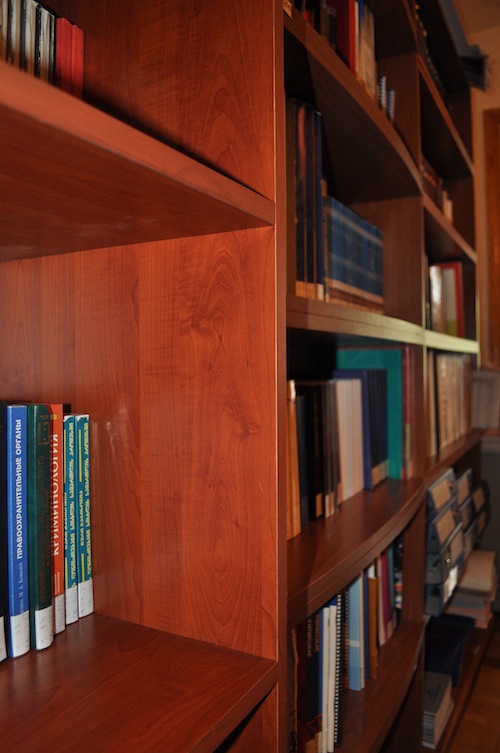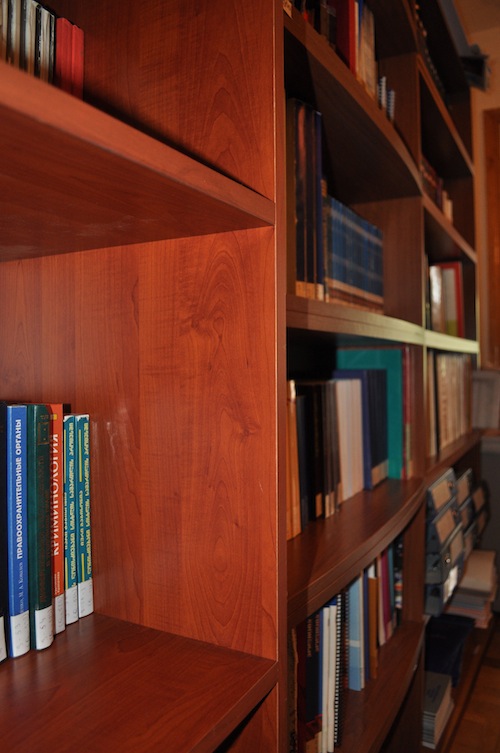
The dissolution of the Soviet Union left many former republics struggling to establish a viable, trustworthy legal infrastructure. From 1991 up until 1997, the Soviet model continued to govern Georgian society. During this time, many citizens still did not trust the Georgian government to protect their rights and solidify their safety.

Legal texts in the library of the Georgian Young Lawyers Association./ Photo by Roshan Nebhrajani
In 1997, legal scholar Lado Chanturia helped translate, and adapt aspects of the German civil code into Georgian script. The state parliamentary committee weaved this code into the legal infrastructure, and began to slowly reform other limbs of the Georgian legal system. In 1999, the president of Georgia signed the criminal code into legislation, according to the UN Refugee Agency.
In order to bolster citizens’ trust in the reliability of the law, the Georgian parliament has been revising and reforming the Civil and Criminal codes since their respective initial inceptions.
With a thriving NGO sector that works to both recognize and address inadequacies of the evolving legal infrastructure, Georgian legislation is in a stage of constant flux. Lawyers, journalists and political activists work hard to reveal the cracks in legislation that cause Georgian citizens to stumble and fall.
This is where JusticeMaker Nana Chapidze begins construction. With her project, she will prepare the cement that judges, police and lawmakers can use to seal the broken path of juvenile justice.
Within the current system, both the Georgian Civil and Criminal codes recognize the differences between criminal responsibilities of juveniles and adults. But that’s all. There is no tangible structure that educates, protects and rehabilitates juvenile offenders. There are no police who specialize in dealing with juvenile offenders.
“While some judges are trained in juvenile cases, they review adult cases also,” Chapidze said.
As a result, judges often asses cases on one standard, giving little consideration to age, socioeconomic status or a countless array of other factors that may influence an offender’s predisposition to commit a crime.
Court hearings are mass-produced, with each ruling resembling a photocopy of the one prior. Court monitoring reports conducted by the project’s legal aid students revealed stark similarities in rulings between very dissimilar cases. This superficial form of justice causes more harm than good. It evades the root of the problem and disables the rehabilitation process.
Prior to being sentenced, juvenile offenders must remain in an adult pretrial detention facility from anywhere between two and nine months while waiting for judgment. Once sentenced, offenders are sent to the only strictly juvenile prison in the entire country. After serving their time, there are virtually no rehabilitation programs aimed at reintegration.
Essentially, “the problem with the juvenile justice system is that there is none,” Chapidze said.
Not yet at least.